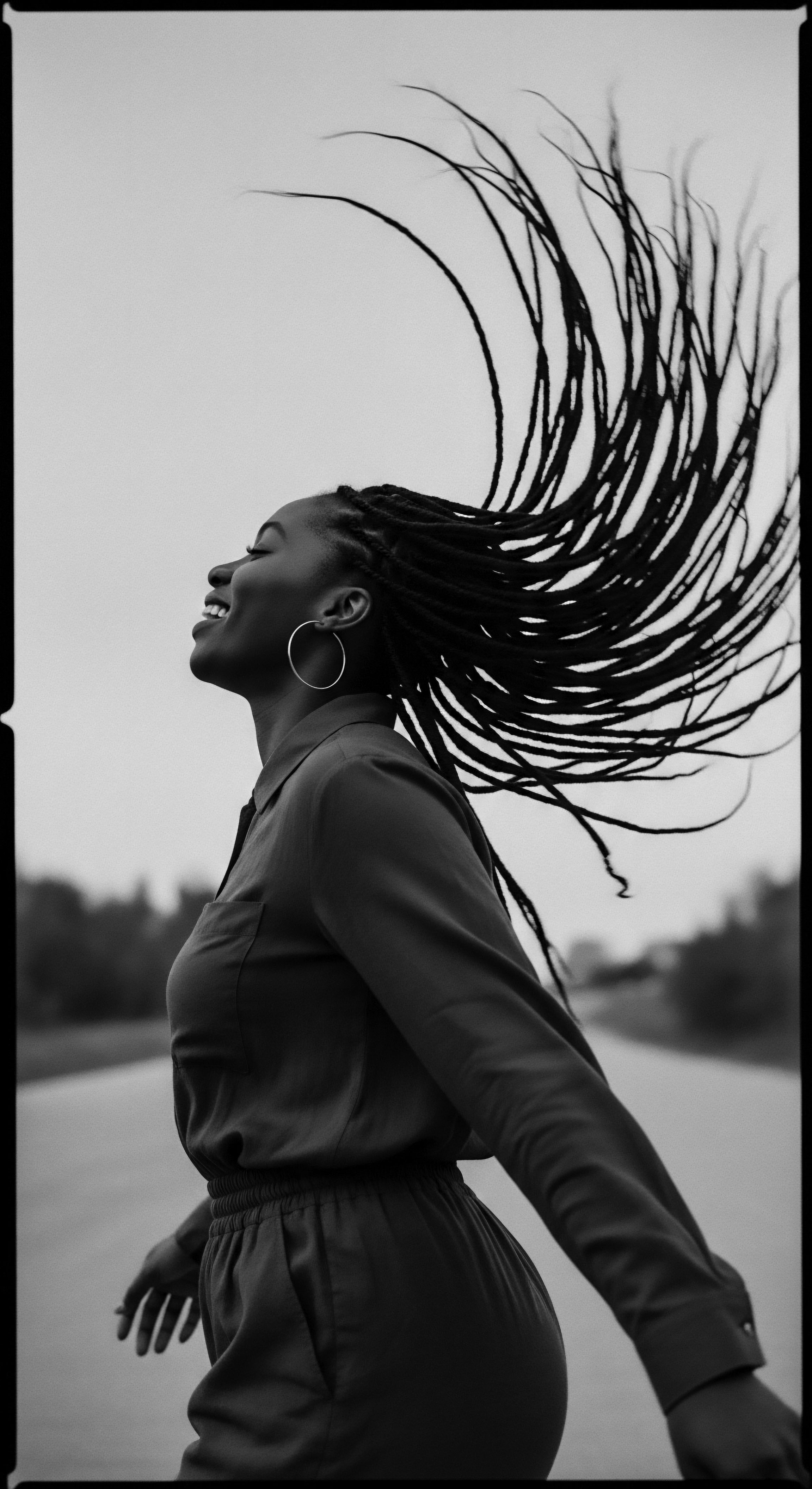
Fundamentals
The notion of ‘Cultural Pride,’ within the Roothea living library, stands as a profound explanation of the deep-seated affirmation individuals and communities hold for their shared heritage, particularly as it manifests through the physical and spiritual expressions of textured hair. It is an acknowledgment of identity, a celebration of lineage, and a declaration of self-worth that has traveled across generations and continents. This understanding extends beyond mere appreciation; it delves into the very substance of belonging, linking personal appearance to collective memory and ancestral wisdom.
At its core, Cultural Pride is the sense of dignity and respect derived from one’s ethnic or cultural background, finding a particularly potent symbol in the diverse and resilient forms of textured hair. This hair, in its coils, kinks, and curls, carries stories of survival, artistry, and continuity. It is a visual language, a tangible connection to the past, and a living testament to traditions that have withstood the tides of time and adversity. The delineation of Cultural Pride begins with recognizing hair not merely as biological fiber but as a repository of historical narratives and communal bonds.
The fundamental meaning of Cultural Pride, especially concerning textured hair, is inextricably tied to the concept of authenticity. It involves embracing the natural inclinations of one’s hair, rejecting external pressures to conform to Eurocentric beauty standards that historically sought to diminish or erase these unique characteristics. This affirmation is a conscious choice, often a journey of rediscovery, that allows individuals to align their external presentation with their inner sense of heritage.
Cultural Pride, in the context of textured hair, signifies a profound affirmation of ancestral heritage and self-worth, visibly expressed through the unique forms of coils, kinks, and curls.
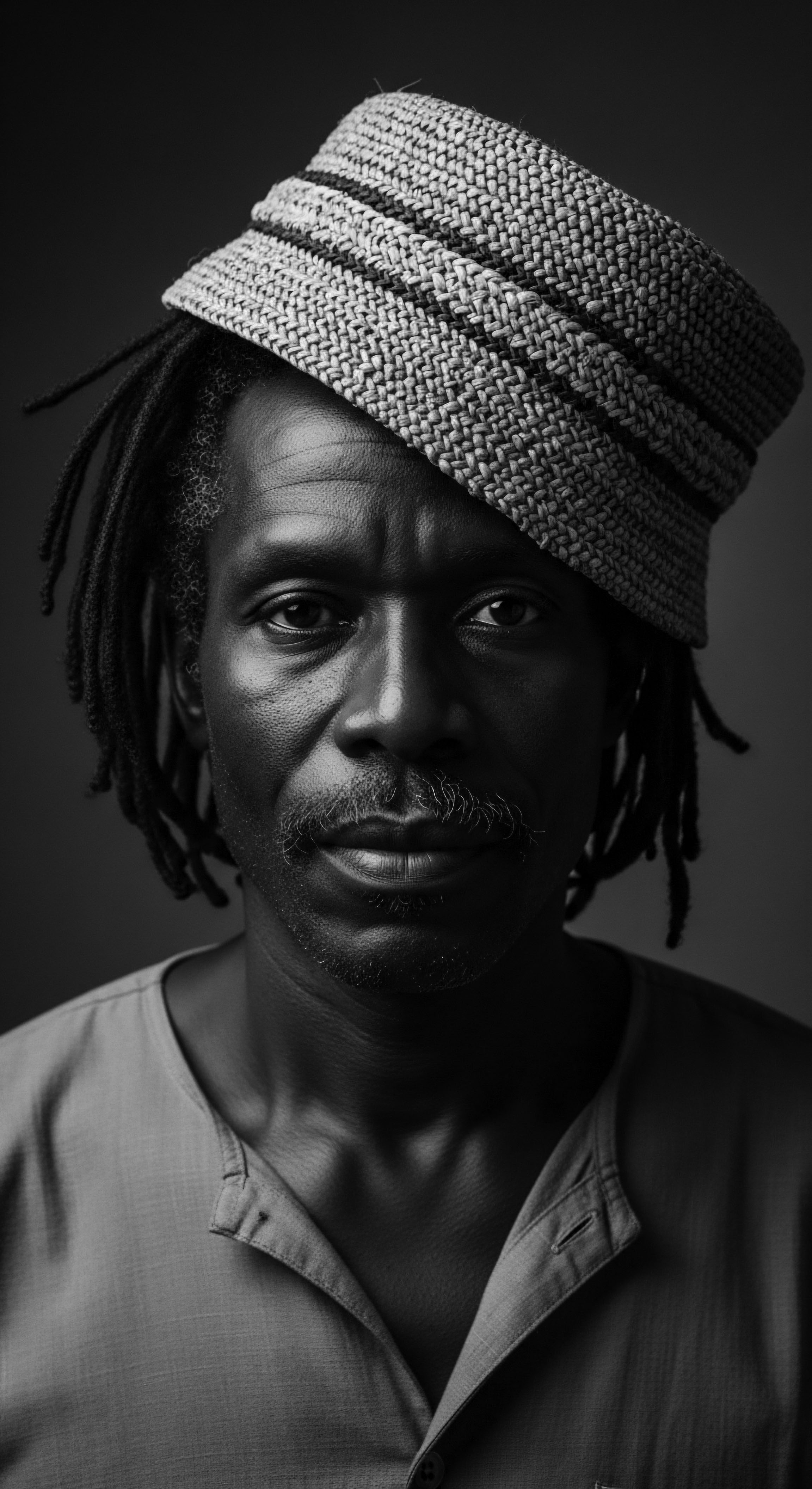
Echoes from the Source ❉ The Biological Roots of Heritage
To truly grasp the foundational aspects of Cultural Pride, one must first appreciate the elemental biology that shapes textured hair. Unlike straight hair, which typically has a round cross-section, coily and kinky hair often possesses an elliptical or flattened cross-section, leading to its characteristic spirals and bends. This unique structure influences how light reflects, how moisture is retained, and how the strands interact with one another, giving rise to its remarkable volume and distinct appearance. The very shape of the follicle, the way it emerges from the scalp, and the journey a strand takes as it grows are all part of this inherited blueprint.
Ancient civilizations, long before the advent of modern microscopy, understood the inherent qualities of their hair. They developed sophisticated practices of care, adornment, and styling that were not merely aesthetic but deeply intertwined with social status, spiritual beliefs, and communal identity. These practices, passed down through oral traditions and hands-on teaching, represent the earliest expressions of Cultural Pride, demonstrating an intuitive comprehension of hair’s biological needs and its symbolic weight. The knowledge of specific plants, oils, and minerals for hair health was an ancestral science, a testament to keen observation and generations of accumulated wisdom.
Consider the intricate braiding traditions of various African ethnic groups. These were not random acts of styling; each pattern, each knot, each part held specific meaning. A particular braid might signify marital status, age, tribal affiliation, or even a rite of passage.
This complex communication system, etched onto the scalp, illustrates how Cultural Pride was woven into the very fabric of daily life, transforming hair into a living canvas of communal history and individual belonging. The ancestral reverence for hair as a conduit for spiritual energy and a symbol of vitality further solidifies its position as a central pillar of this inherited self-regard.
- Palm Oil ❉ Revered for its conditioning properties, often used in West African communities for scalp health and to add luster to strands.
- Shea Butter ❉ A staple across many African traditions, applied to moisturize and protect hair from environmental stressors, promoting elasticity.
- Chebe Powder ❉ Originating from Chad, this blend of herbs is traditionally used to strengthen hair, reduce breakage, and support significant length retention.
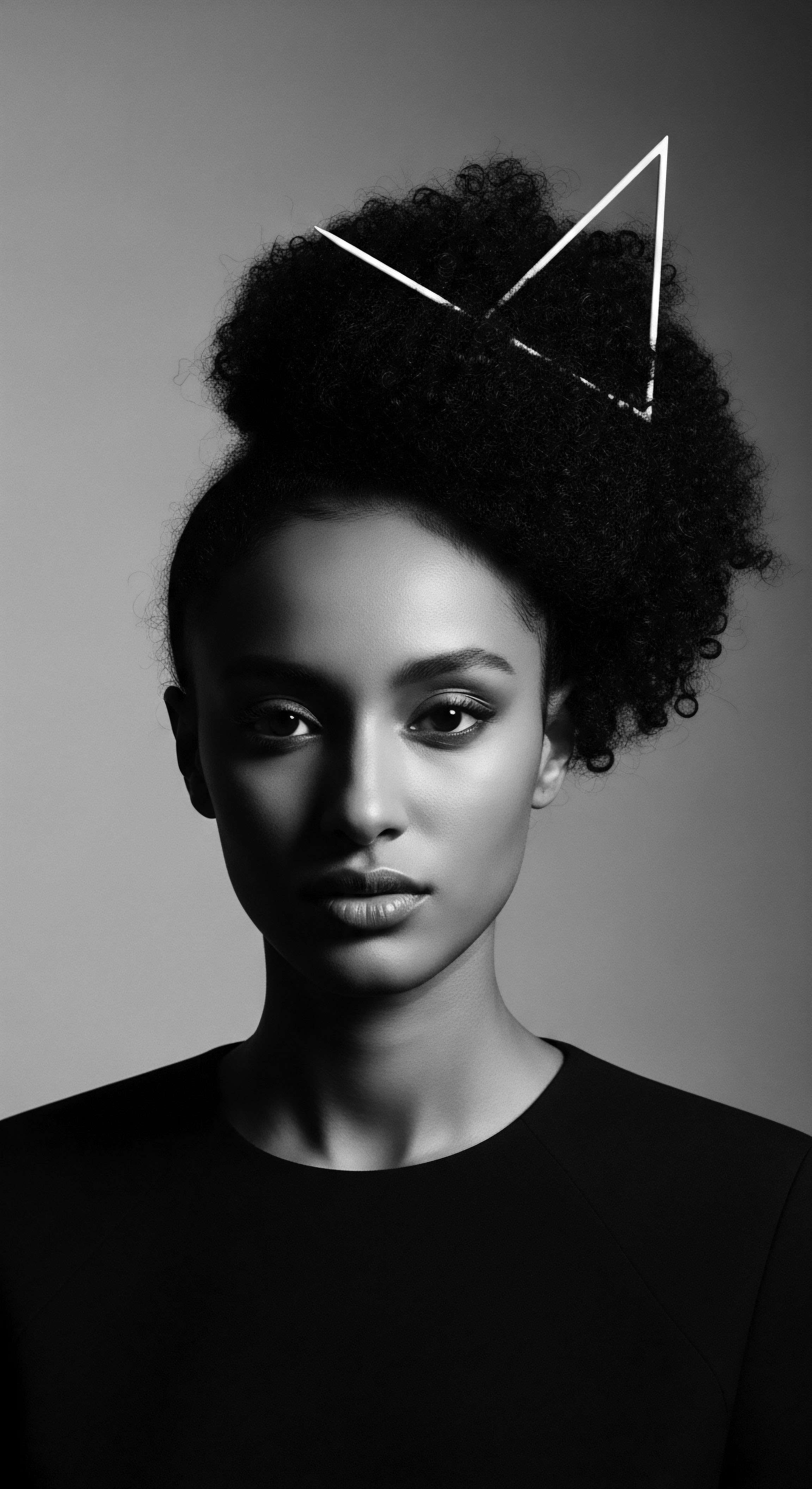
Intermediate
Moving beyond the foundational understanding, the intermediate meaning of Cultural Pride unveils itself as a dynamic process of reclamation and celebration within diasporic communities. It is a conscious act of affirming heritage in the face of historical erasure and systemic devaluation. For individuals with textured hair, this translates into a profound connection to their ancestral roots, recognizing that their hair is not a burden or a challenge, but a crowning glory, a direct link to the resilience and artistry of those who came before. This interpretation of Cultural Pride encompasses both the personal journey of self-acceptance and the collective movement towards visibility and recognition.
The significance of Cultural Pride becomes particularly apparent when examining the historical trajectory of Black and mixed-race hair experiences. Generations endured immense pressure to straighten, chemically alter, or conceal their natural textures to conform to dominant beauty norms. This period, marked by the widespread adoption of chemical relaxers and hot combs, represented a painful detachment from an inherited identity.
The re-emergence of the natural hair movement, therefore, was not merely a trend; it was a powerful assertion of Cultural Pride, a collective decision to shed imposed standards and reclaim an authentic self. This movement is a living testament to the enduring power of cultural memory and the human spirit’s yearning for authenticity.
Cultural Pride, for textured hair communities, represents a powerful act of reclamation, transforming historical devaluation into a vibrant celebration of ancestral identity and natural beauty.
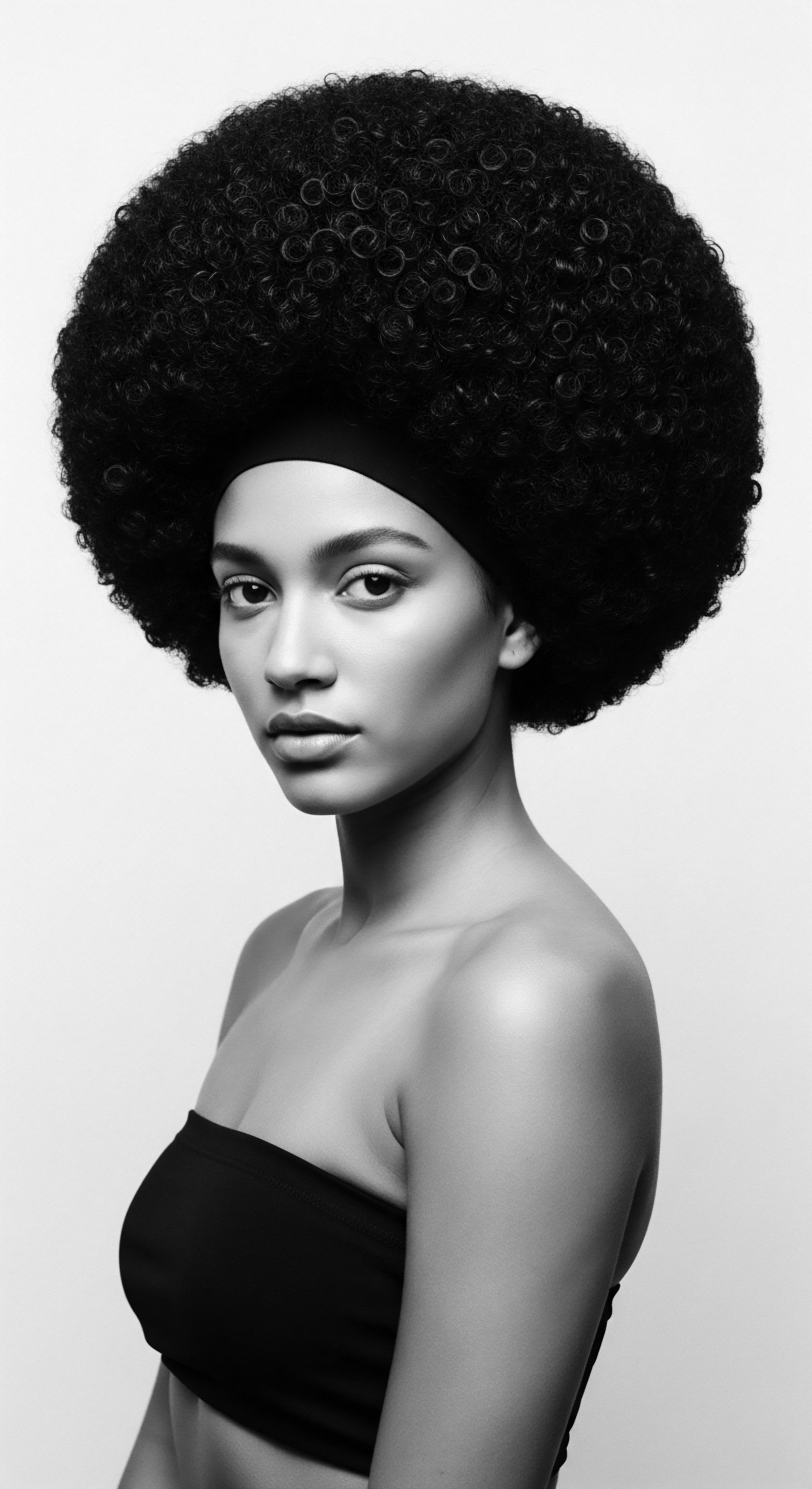
The Tender Thread ❉ Living Traditions of Care and Community
The Cultural Pride associated with textured hair is deeply embedded within living traditions of care and community, where hair rituals serve as tender threads connecting past and present. These practices extend beyond mere hygiene; they are acts of love, intergenerational teaching, and communal bonding. From the meticulous sectioning for braids to the patient application of oils and butters, each gesture carries the weight of inherited wisdom and the warmth of shared experience. These are not just routines; they are ceremonies that reaffirm identity and belonging.
In many Black and mixed-race households, hair care is a communal event, especially for children. Saturdays often transformed into informal salons, where mothers, aunts, and grandmothers would gather, their hands deftly working through coils, sharing stories, laughter, and advice. This environment instilled a sense of shared heritage and self-acceptance from a young age.
The tactile experience of hair care, the scents of natural ingredients, and the rhythm of conversation formed a sensory archive of Cultural Pride, passed down with each comb stroke and braid. The tender touch involved in detangling, moisturizing, and styling becomes a silent language of affection and affirmation.
Moreover, the selection of specific ingredients for hair care often reflects ancestral knowledge of ethnobotany. Generations understood which plants offered conditioning properties, which provided strength, and which soothed the scalp. This traditional ecological knowledge, often dismissed in formal scientific discourse, is now gaining renewed appreciation for its efficacy and sustainability. The use of these ingredients, often sourced from the African continent or adapted within diasporic contexts, reinforces the continuous thread of cultural practices and a profound respect for nature’s bounty.
Consider the shift in the hair care market as an illustration of this evolving Cultural Pride. For decades, the market was dominated by products designed to straighten or chemically alter textured hair. However, with the rise of the natural hair movement, there has been a significant reorientation.
According to Mintel reports, Black consumers’ spending on routine haircare products has seen consistent growth, with a notable increase in interest in hair oils and products that support natural growth and health. This financial redirection is not simply a change in consumer preference; it signifies a collective investment in products that honor and maintain natural textures, reflecting a tangible manifestation of Cultural Pride driving economic shifts and supporting Black-owned businesses that cater to these specific needs.
| Traditional Practice (Rooted in Heritage) Hair Oiling ❉ Regular application of plant-based oils (e.g. coconut, castor, olive) to the scalp and strands. |
| Modern Understanding (Connecting Science to Heritage) Scalp Health & Moisture Retention ❉ Modern science confirms these oils can seal moisture into the hair shaft, reduce protein loss, and possess antimicrobial properties beneficial for scalp microbiome balance. |
| Traditional Practice (Rooted in Heritage) Protective Styling ❉ Braids, twists, and cornrows worn for extended periods. |
| Modern Understanding (Connecting Science to Heritage) Minimizing Manipulation & Breakage ❉ Scientific analysis validates that these styles reduce daily wear and tear, preserve length, and protect delicate ends from environmental damage. |
| Traditional Practice (Rooted in Heritage) Herbal Rinses ❉ Use of infusions from specific plants (e.g. hibiscus, rosemary) for cleansing and conditioning. |
| Modern Understanding (Connecting Science to Heritage) pH Balance & Nutrient Delivery ❉ Research indicates that certain herbal compounds can help balance scalp pH, provide antioxidants, and stimulate circulation, promoting healthier growth. |
| Traditional Practice (Rooted in Heritage) These examples illustrate how ancestral wisdom, born from intimate knowledge of textured hair, often aligns with contemporary scientific findings, reaffirming the enduring value of traditional practices. |
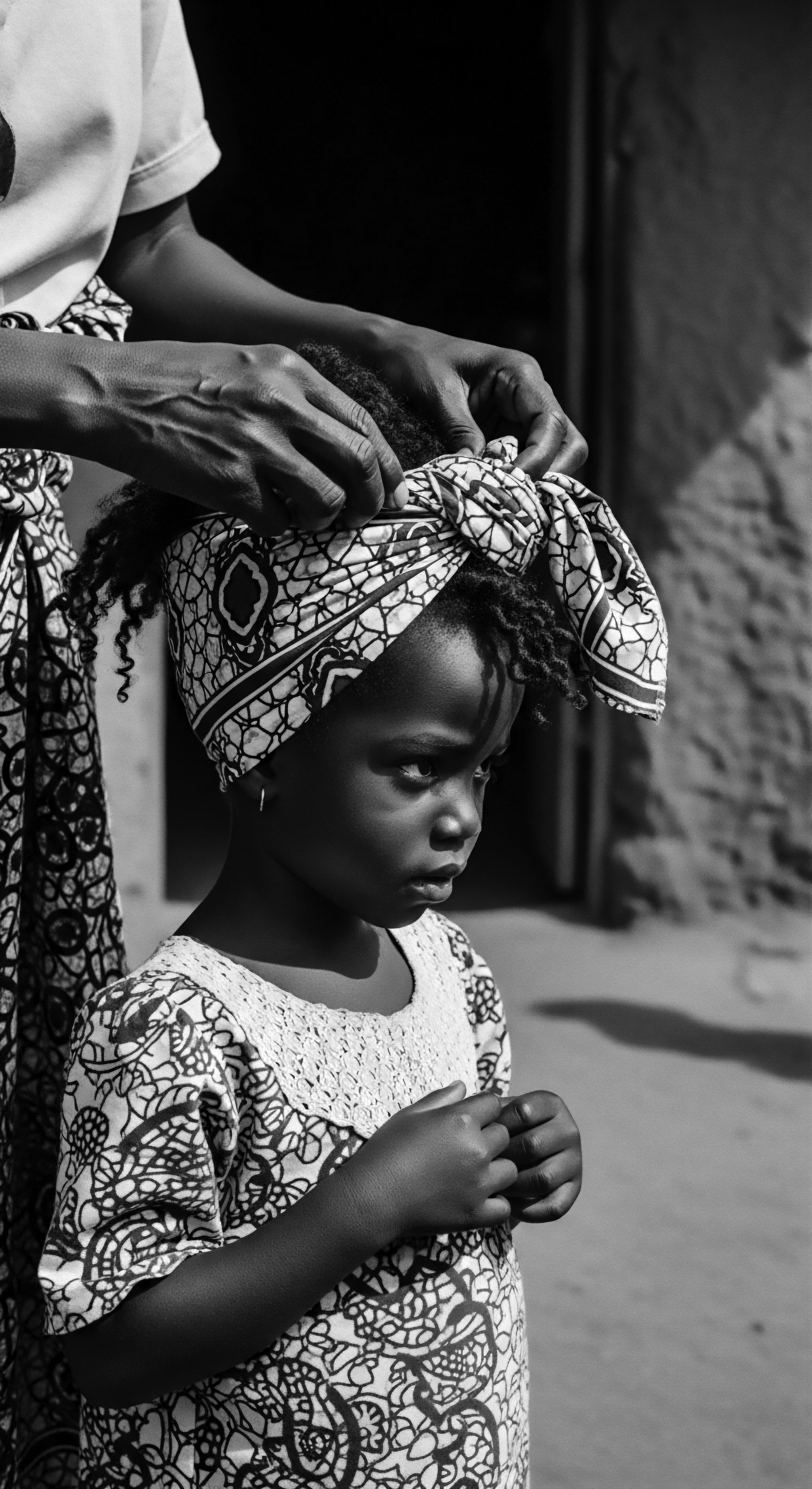
Academic
At an academic level, the meaning of Cultural Pride, particularly concerning textured hair, extends into a complex interplay of identity politics, socio-economic dynamics, and ancestral memory. It is a profound explication of how a physiological trait—hair texture—becomes a site of resistance, a symbol of liberation, and a canvas for collective identity within marginalized communities. This academic interpretation delves into the theoretical underpinnings of cultural resilience, examining how groups reclaim and redefine beauty standards as a strategic act of self-determination and a challenge to dominant power structures. It moves beyond simple definition to analyze the systemic forces that have historically sought to suppress this pride and the transformative power of its resurgence.
The delineation of Cultural Pride in this context involves a rigorous examination of its historical development, tracing its roots from pre-colonial African societies through the transatlantic slave trade, colonialism, and into contemporary globalized cultures. It acknowledges that for Black and mixed-race individuals, hair has rarely been a neutral subject. Instead, it has served as a battleground for self-expression versus assimilation, a marker of social hierarchy, and a barometer of racial acceptance. The scholarly pursuit of this topic uncovers how Cultural Pride, manifested through hair, acts as a critical component of psychological well-being and collective solidarity.

The Unbound Helix ❉ Voicing Identity and Shaping Futures
The concept of Cultural Pride, when viewed through the lens of textured hair, represents an unbound helix of identity, continually twisting and turning, voicing the aspirations of a people and shaping their collective futures. This perspective recognizes hair as a powerful medium for self-expression, political statement, and a catalyst for social change. It is here that the deeper academic understanding of Cultural Pride comes into sharp focus, examining how hair becomes a site of agency and an instrument for challenging oppressive narratives.
One compelling historical example that powerfully illuminates the Cultural Pride’s connection to textured hair heritage and ancestral practices is found in the ingenuity of the Maroon communities during the era of enslavement. These groups, composed of Africans who escaped bondage and established independent settlements, often utilized their hair as a covert means of survival and cultural preservation. Anthropological studies and historical accounts suggest that women, in particular, would braid intricate patterns into their hair, not merely for aesthetic purposes, but to serve as literal maps of escape routes through dense forests and unfamiliar terrains (White, 1999).
Beyond directional guidance, some narratives describe seeds being braided into the hair, providing sustenance or the means to cultivate crops once freedom was attained. This practice exemplifies Cultural Pride as a profound act of resistance, where traditional hair artistry transformed into a vital tool for liberation, symbolizing an unbreakable connection to ancestral knowledge and a fierce determination to forge a self-determined future.
The symbolic weight of textured hair extends into contemporary social movements. The “Black is Beautiful” movement of the mid-20th century, for instance, championed the Afro as a symbol of racial pride and political consciousness, directly confronting prevailing Eurocentric beauty standards. This was not merely a stylistic preference; it was a deliberate, collective declaration of self-acceptance and a rejection of the notion that Black features were somehow less desirable. The Afro became a visual manifesto, a tangible expression of Cultural Pride that resonated globally and helped reshape perceptions of beauty.
For textured hair communities, Cultural Pride serves as an unbound helix, intertwining historical resistance with contemporary identity, thereby shaping collective futures through visible acts of self-affirmation.
Furthermore, the academic analysis of Cultural Pride includes its economic dimensions. The growth of the Black hair care industry, particularly the natural hair segment, represents a significant shift in consumer power and self-reliance. Historically, the market was dominated by products that promoted alteration rather than celebration of natural texture. The resurgence of Cultural Pride has led to a demand for products that cater specifically to the unique needs of coils and kinks, fostering a vibrant ecosystem of Black-owned businesses.
This economic empowerment is a direct outcome of a collective cultural awakening, demonstrating how deeply intertwined identity, heritage, and commerce can become. Mintel reports indicate that Black consumers show a preference for products addressing specific hair needs over brand loyalty, highlighting a demand for formulations that fit personal routines and concerns. This consumer behavior, driven by a desire for products that genuinely support their natural hair, underscores the economic impact of Cultural Pride.
The discourse surrounding Cultural Pride also involves the legal and social battles against hair discrimination. Laws like the CROWN Act in the United States, which prohibits discrimination based on hair texture and protective hairstyles, are direct responses to the ongoing challenges faced by individuals whose natural hair is deemed “unprofessional” or “unsuitable” in various settings. These legislative efforts are not just about legal protections; they are about validating the right to express Cultural Pride without fear of reprisal, affirming that one’s natural hair is an inherent part of their racial and cultural identity. The struggle for these protections highlights the enduring societal biases that Cultural Pride seeks to dismantle.
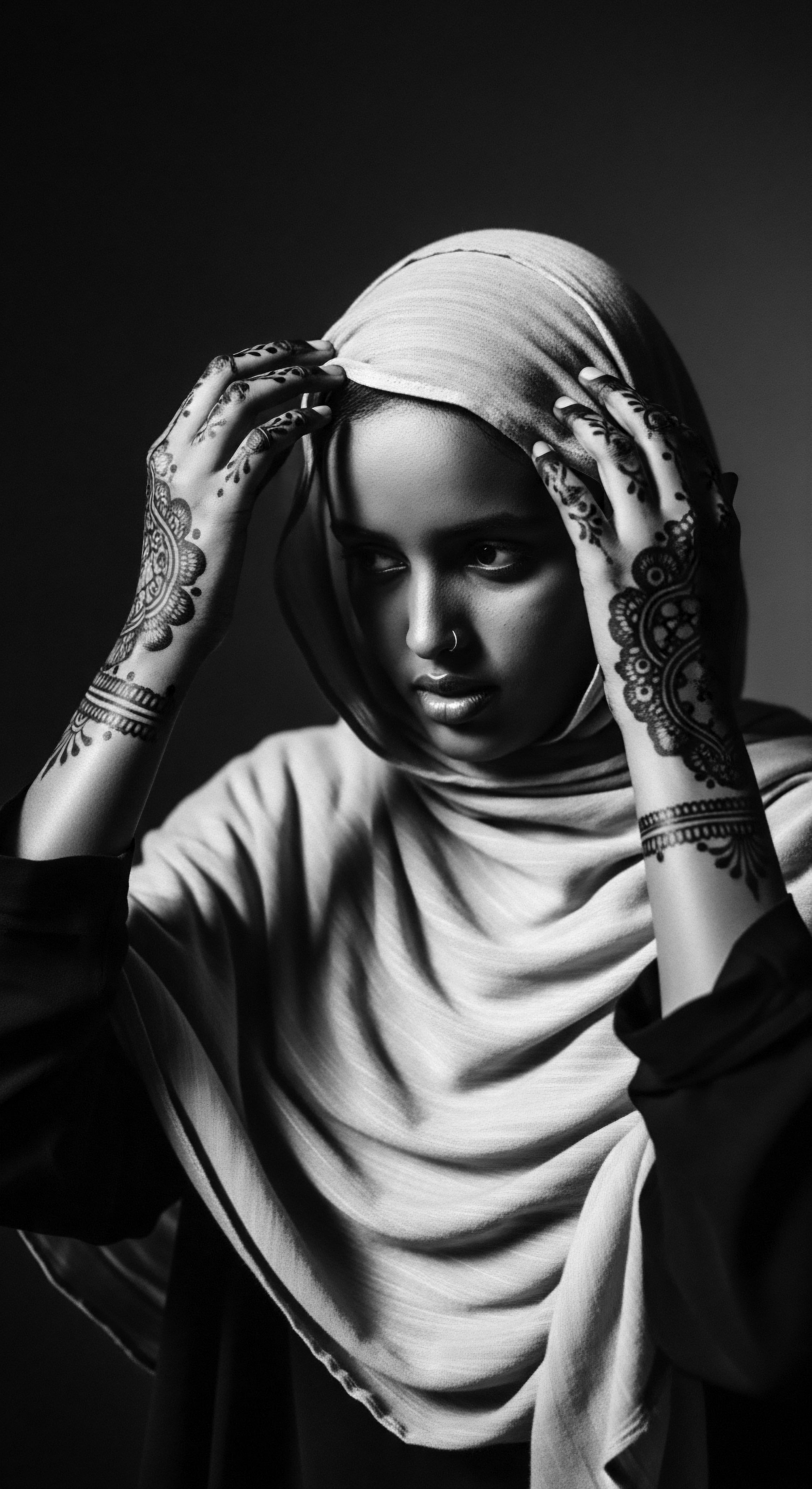
Psychological Dimensions of Textured Hair Pride
From a psychological standpoint, Cultural Pride related to textured hair is deeply intertwined with self-esteem, body image, and mental well-being. For generations, negative societal messages about textured hair contributed to internalized self-hatred and body dysmorphia within Black and mixed-race communities. The deliberate act of embracing one’s natural hair can be a profoundly therapeutic process, fostering a sense of authenticity and confidence.
This act of self-acceptance ripples outwards, contributing to a stronger collective identity and challenging the pervasive effects of colorism and texturism. It becomes a source of individual strength and communal affirmation.
Research in psychology and sociology examines how visible expressions of Cultural Pride, such as wearing natural hairstyles, contribute to a positive racial identity development. For children, seeing positive representations of textured hair in media and within their communities reinforces a healthy self-perception and reduces the likelihood of developing negative associations with their inherited features. This positive reinforcement builds a foundation for lifelong self-acceptance and resilience against societal pressures. The celebration of hair as a form of cultural heritage becomes a protective factor against the psychological toll of discrimination.
- Identity Affirmation ❉ The conscious choice to wear natural textured hair directly affirms one’s racial and cultural identity, strengthening self-perception.
- Community Connection ❉ Shared hair care practices and collective movements around natural hair foster a sense of belonging and solidarity among individuals.
- Resistance to Erasure ❉ Visible expressions of textured hair pride stand as a counter-narrative to historical attempts at cultural assimilation and aesthetic subjugation.
- Intergenerational Learning ❉ The transmission of traditional hair care knowledge and cultural meanings from elders to youth reinforces continuity and respect for ancestral wisdom.
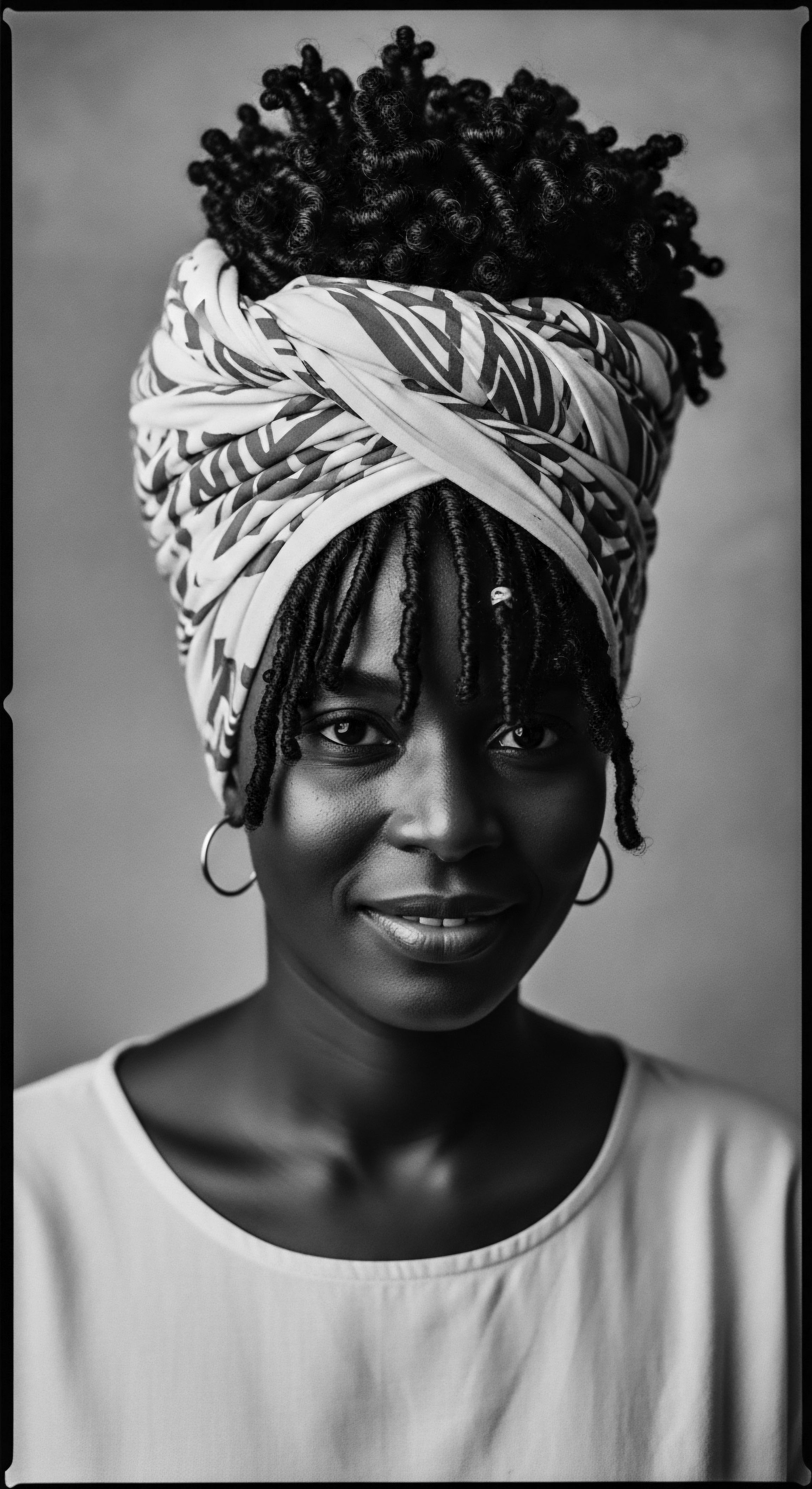
Reflection on the Heritage of Cultural Pride
The exploration of Cultural Pride, as a living entry within Roothea’s archive, culminates in a deep meditation on its enduring heritage and evolving significance within the context of textured hair and its communities. This is a journey that began with the elemental biology of the strand, moved through the tender threads of living traditions, and ultimately arrived at the unbound helix of identity and future-shaping. The Soul of a Strand ethos, therefore, is not merely a poetic phrase; it is a guiding principle that recognizes hair as a sacred vessel of ancestral memory, a vibrant expression of identity, and a continuous source of strength.
From the ancient rituals that honored hair as a conduit for spiritual energy to the defiant cornrows of the Maroons that mapped paths to freedom, the heritage of Cultural Pride has always been one of profound meaning. It is a legacy etched in the very texture of hair, a testament to ingenuity, resilience, and an unwavering commitment to self-determination. The journey of textured hair is a microcosm of a larger human story ❉ the persistence of cultural identity in the face of adversity, the power of collective memory, and the boundless capacity for self-love.
As we gaze upon the myriad styles, the vibrant colors, and the distinct patterns of textured hair today, we witness a dynamic continuation of this heritage. Each coil, each kink, each curl whispers tales of survival, celebration, and innovation. The modern movements advocating for natural hair and fighting against discrimination are not new phenomena; they are contemporary manifestations of an ancient pride, a perpetual reaffirmation that the inherent beauty and dignity of textured hair are non-negotiable. This ongoing narrative, woven from biological marvel and cultural artistry, assures us that the spirit of Cultural Pride, deeply rooted in the heritage of the strand, will continue to inspire and empower for generations to come.

References
- White, S. (1999). Stylin’ ❉ African American Expressive Culture from Its Beginnings to the Zoot Suit. Cornell University Press.
- Mintel Group Ltd. (Various Years). Black Consumers and Haircare Report. (Specific year and page numbers vary by report, but general trends are widely cited in industry analyses).
